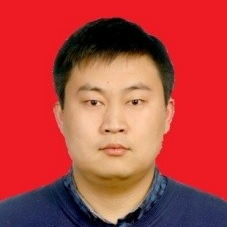Piezoelectric Actuators
A special issue of Applied Sciences (ISSN 2076-3417). This special issue belongs to the section "Mechanical Engineering".
Deadline for manuscript submissions: closed (15 November 2018) | Viewed by 34330
Special Issue Editors
Interests: piezoelectric actuators; ultrasonic transducers; micro-nano manipulations; nanopositioning; vibration control; soft robots
Special Issues, Collections and Topics in MDPI journals
Interests: MEMS; power harvesting; piezoelectric motor
Interests: piezoelectricity; ferroelectricity; crystals; ceramics; transducers
Special Issues, Collections and Topics in MDPI journals
Special Issue Information
Dear Colleagues,
Piezoelectric actuators exhibit the merits of high displacement resolution, quick response, simple structure, large power weight ratio, large thrust weight ratio, quiet operation, self-locking when power is off, no electromagnetic interference and so on. These merits make them good candidates for applications in systems with special requirements. For example, piezoelectric actuators have been successfully used in fields like biological manipulations, MEMS, measuring equipments, robots and space mechanisms. This Special Issue will comprise the state-of-the-art, latest advances and future trends in the field of piezoelectric actuators, ultrasonic motors, micro piezoelectric motors, nano positioning piezoelectric actuators, piezoelectric materials, piezoelectric micro jets, piezoelectric energy harvesting, ultrasonic transducers and ultrasonic-aided machining. Advances and trends in the new designs, mathematical modeling, computer simulations, optimization techniques, experiments and new applications are very welcome. Both review and special topic papers are welcome.
Prof. Dr. Yingxiang Liu
Dr. Siyuan He
Prof. Dr. Shujun Zhang
Guest Editors
Manuscript Submission Information
Manuscripts should be submitted online at www.mdpi.com by registering and logging in to this website. Once you are registered, click here to go to the submission form. Manuscripts can be submitted until the deadline. All submissions that pass pre-check are peer-reviewed. Accepted papers will be published continuously in the journal (as soon as accepted) and will be listed together on the special issue website. Research articles, review articles as well as short communications are invited. For planned papers, a title and short abstract (about 100 words) can be sent to the Editorial Office for announcement on this website.
Submitted manuscripts should not have been published previously, nor be under consideration for publication elsewhere (except conference proceedings papers). All manuscripts are thoroughly refereed through a single-blind peer-review process. A guide for authors and other relevant information for submission of manuscripts is available on the Instructions for Authors page. Applied Sciences is an international peer-reviewed open access semimonthly journal published by MDPI.
Please visit the Instructions for Authors page before submitting a manuscript. The Article Processing Charge (APC) for publication in this open access journal is 2400 CHF (Swiss Francs). Submitted papers should be well formatted and use good English. Authors may use MDPI's English editing service prior to publication or during author revisions.
Keywords
Piezoelectric/ferroelectric materials
Piezoelectric actuators
Ultrasonic motors
Micro piezoelectric motors
Nano positioning piezoelectric actuators
Piezoelectric micro jets
Piezoelectric Energy harvesting
Ultrasonic transducers
Ultrasonic-aided machining
Mathematical modeling for piezoelectric actuator
Computer simulation method for piezoelectric actuator
Benefits of Publishing in a Special Issue
- Ease of navigation: Grouping papers by topic helps scholars navigate broad scope journals more efficiently.
- Greater discoverability: Special Issues support the reach and impact of scientific research. Articles in Special Issues are more discoverable and cited more frequently.
- Expansion of research network: Special Issues facilitate connections among authors, fostering scientific collaborations.
- External promotion: Articles in Special Issues are often promoted through the journal's social media, increasing their visibility.
- e-Book format: Special Issues with more than 10 articles can be published as dedicated e-books, ensuring wide and rapid dissemination.
Further information on MDPI's Special Issue policies can be found here.







